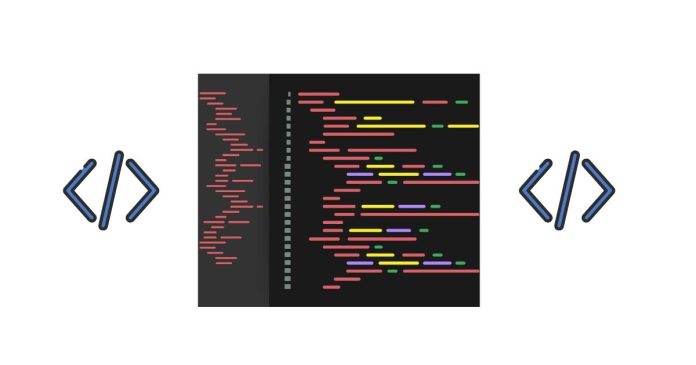Aligning text in HTML is a common requirement when designing web pages. You can control the alignment of text within a page using different HTML tags and CSS (Cascading Style Sheets). In HTML, text alignment refers to positioning the text within an element either to the left, right, center, or justify it across the page or container.
Let’s dive into the various ways to align text in HTML using different techniques and properties.
1. Using the align Attribute (Deprecated in HTML5)
In older versions of HTML, the align attribute was used directly in the HTML tags to align text. This method is deprecated in HTML5, meaning it is no longer recommended to use this method in modern web development.
Example:
<p align="center">This text is centered using the deprecated align attribute.</p>
Possible values for the align attribute:
left: Aligns the text to the left of its container (default for most elements).right: Aligns the text to the right of its container.center: Centers the text within its container.justify: Justifies the text (distributes the text evenly between the left and right margins).
While the align attribute was useful in older HTML, it is best practice to use CSS for text alignment in modern HTML documents.
2. Using CSS text-align Property
In modern web development, CSS is the preferred way to align text. The text-align property is applied to the container (typically a block-level element like a <div>, <p>, <h1>, etc.) to control the alignment of the text inside it.
Syntax:
text-align: left | right | center | justify;
Example:
Left Aligning Text (Default)
<!DOCTYPE html>
<html lang="en">
<head>
<meta charset="UTF-8">
<meta name="viewport" content="width=device-width, initial-scale=1.0">
<title>Left Align Text</title>
<style>
p {
text-align: left; /* Aligns the text to the left */
}
</style>
</head>
<body>
<p>This text is aligned to the left.</p>
</body>
</html>
Center Aligning Text
<!DOCTYPE html>
<html lang="en">
<head>
<meta charset="UTF-8">
<meta name="viewport" content="width=device-width, initial-scale=1.0">
<title>Center Align Text</title>
<style>
p {
text-align: center; /* Centers the text */
}
</style>
</head>
<body>
<p>This text is centered using CSS.</p>
</body>
</html>
Right Aligning Text
<!DOCTYPE html>
<html lang="en">
<head>
<meta charset="UTF-8">
<meta name="viewport" content="width=device-width, initial-scale=1.0">
<title>Right Align Text</title>
<style>
p {
text-align: right; /* Aligns the text to the right */
}
</style>
</head>
<body>
<p>This text is aligned to the right.</p>
</body>
</html>
Justify Aligning Text
<!DOCTYPE html>
<html lang="en">
<head>
<meta charset="UTF-8">
<meta name="viewport" content="width=device-width, initial-scale=1.0">
<title>Justify Align Text</title>
<style>
p {
text-align: justify; /* Justifies the text */
}
</style>
</head>
<body>
<p>This text is justified. Justifying text means that the text is spread out evenly between the left and right margins.</p>
</body>
</html>
3. Using the vertical-align Property
The vertical-align property is used to align inline or inline-block elements vertically. It is often used when you want to align an image, text, or other inline elements relative to each other.
Syntax:
vertical-align: baseline | top | middle | bottom;
baseline: Aligns the element with the baseline of the parent element (default behavior).top: Aligns the element at the top of the line height.middle: Aligns the element vertically in the middle of the line height.bottom: Aligns the element at the bottom of the line height.
Example:
<!DOCTYPE html>
<html lang="en">
<head>
<meta charset="UTF-8">
<meta name="viewport" content="width=device-width, initial-scale=1.0">
<title>Vertical Align Example</title>
<style>
.align-middle {
vertical-align: middle;
}
</style>
</head>
<body>
<p>This is a <span class="align-middle">centered text</span> in the middle of the line.</p>
</body>
</html>
4. Using Flexbox for Text Alignment
The CSS Flexbox layout model allows for more complex and flexible control over the positioning and alignment of elements. It’s especially useful for aligning text and other content both horizontally and vertically within a container.
Syntax:
display: flex;
justify-content: center | flex-start | flex-end | space-between | space-around;
align-items: center | flex-start | flex-end | stretch;
justify-content: Aligns the items along the main axis (horizontal in a row).align-items: Aligns the items along the cross axis (vertical in a row).
Example:
<!DOCTYPE html>
<html lang="en">
<head>
<meta charset="UTF-8">
<meta name="viewport" content="width=device-width, initial-scale=1.0">
<title>Flexbox Text Alignment</title>
<style>
.container {
display: flex;
justify-content: center; /* Centers text horizontally */
align-items: center; /* Centers text vertically */
height: 200px; /* Set the height to demonstrate vertical alignment */
border: 1px solid #000;
}
</style>
</head>
<body>
<div class="container">
<p>This text is centered both horizontally and vertically using Flexbox.</p>
</div>
</body>
</html>
5. Using Grid for Text Alignment
The CSS Grid layout is another powerful tool for aligning content. It allows for even more sophisticated control over both horizontal and vertical alignment.
Syntax:
display: grid;
place-items: center; /* Aligns content both horizontally and vertically */
Example:
<!DOCTYPE html>
<html lang="en">
<head>
<meta charset="UTF-8">
<meta name="viewport" content="width=device-width, initial-scale=1.0">
<title>Grid Text Alignment</title>
<style>
.container {
display: grid;
place-items: center; /* Centers text horizontally and vertically */
height: 200px; /* Set the height to demonstrate vertical alignment */
border: 1px solid #000;
}
</style>
</head>
<body>
<div class="container">
<p>This text is centered using CSS Grid.</p>
</div>
</body>
</html>
Conclusion
Aligning text in HTML can be done using several methods, each suited to different types of layouts and design needs. Here’s a quick summary of the key techniques:
alignattribute: Deprecated in HTML5, but used for simple alignment in older code.text-alignCSS property: The most commonly used method to align text horizontally (left, right, center, justify).vertical-alignCSS property: Used to align inline elements vertically.- Flexbox: A more powerful layout tool for centering text both horizontally and vertically.
- Grid: A more complex system for aligning content in both axes.
For modern web development, it’s recommended to use CSS (text-align, vertical-align, Flexbox, or Grid) for all alignment tasks instead of relying on deprecated HTML attributes.


